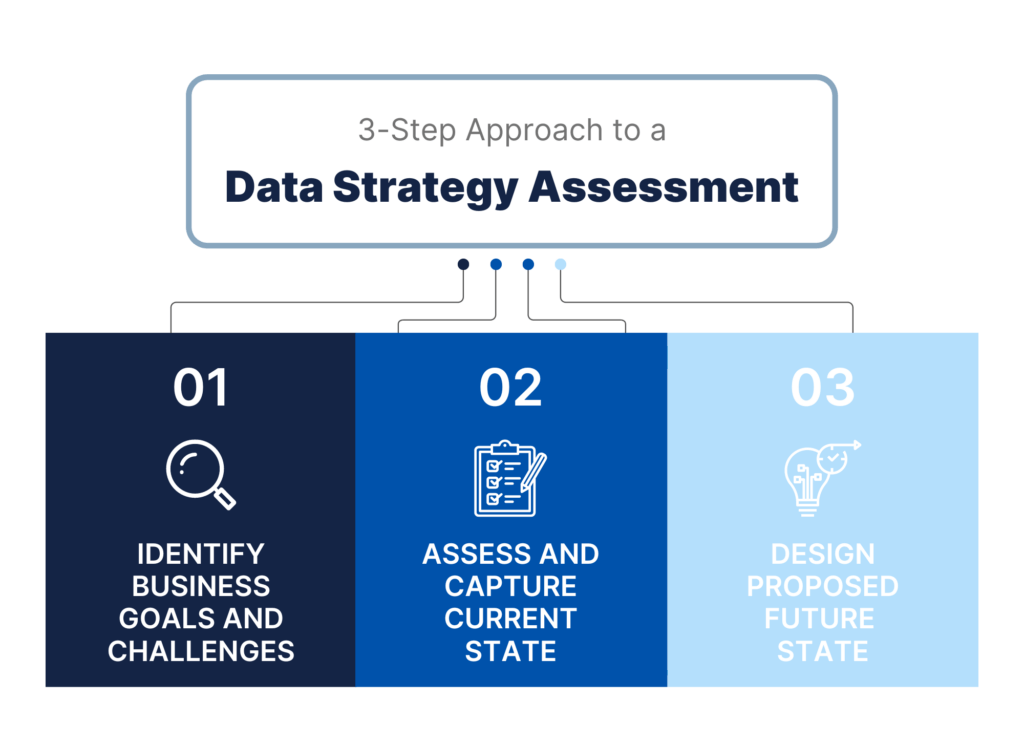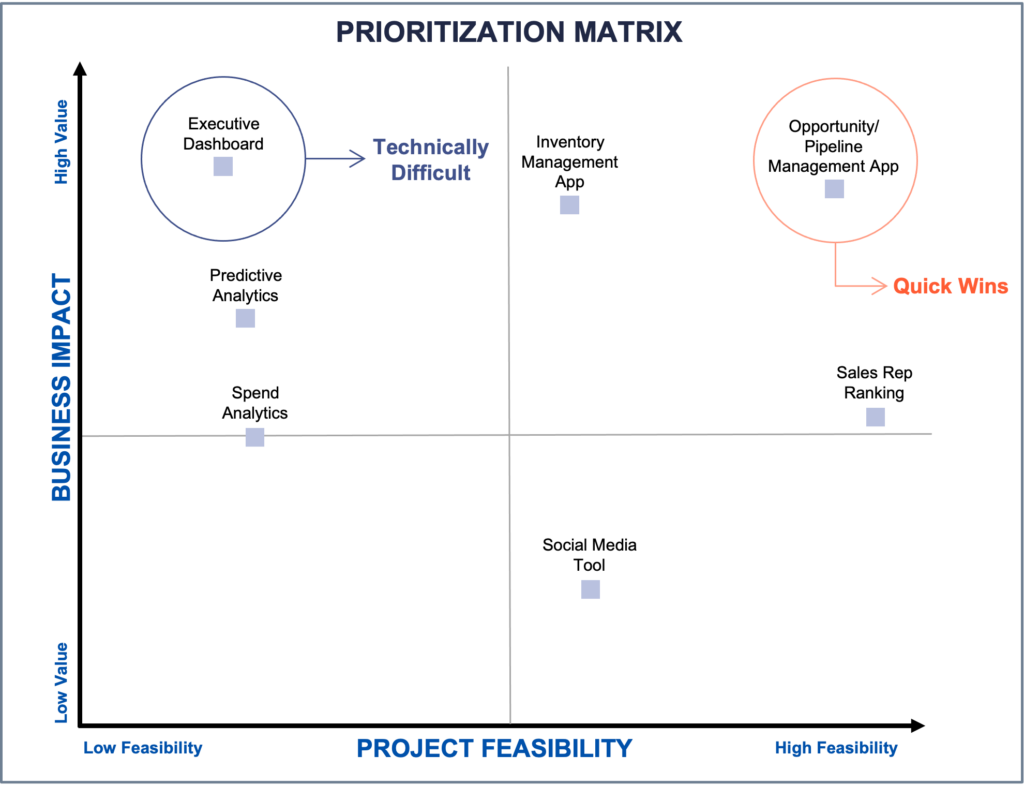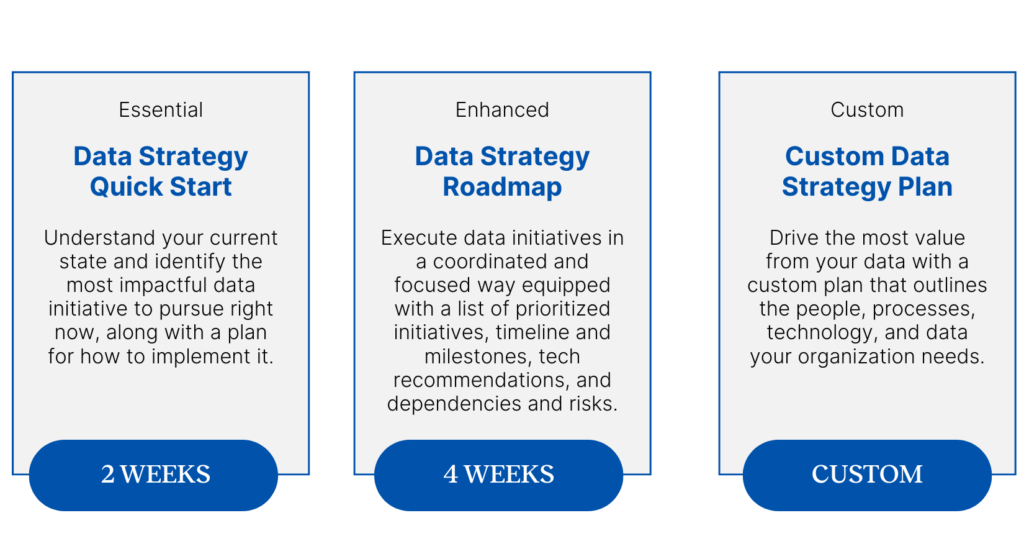
Successful, thriving companies all have one thing in common: they can make sense of their data and strategically use it to transform and drive their business forward. But how do they do it? It’s simple: they have a defined data strategy that acts as the foundation of their data and analytics practices.
A good strategy is more than just data and technology — it is a defined plan that outlines the people, processes, technology, and data that your organization needs to accomplish your data and analytics goals. A good data strategy answers exactly:
Before you can answer any of these questions and develop a successful data strategy, you should start with a data strategy assessment.
In this blog, we cover:
A data strategy assessment is an in-depth evaluation of various factors within your organization that affect the quality of your analytics and your ability to make data-driven decisions. During an assessment, you review where you are today, map out where you’d like to go, and develop a plan for how to get there.
The goal: at the end of an assessment, you will have a defined data analytics strategy and a customized, step-by-step roadmap that defines how to implement it. The data strategy roadmap outlines all the steps that need to happen and when, so you can be confident that you are tackling projects in the right order and realizing quick wins right out the gate.
There are three steps to a successful data strategy assessment, including identifying goals and challenges, assessing and capturing the current state, and finally, designing a proposed future state. Armed with this information, you will have what you need to create a roadmap for a successful data strategy.

The three-step approach to assess your data and analytics allows you to understand business goals, capture current state, and design a future state that enables long-term success.
Interview IT and business stakeholders to get a complete understanding of your business goals, current roadblocks, and specific uses cases where data can support your goals. During these interviews, discuss and identify:
Get a better understanding of where you are today by assessing your analytics maturity and examining your current environment.
During this assessment, discuss and identify:
Summarize all of this into a current state overview that details where insufficiencies exist within your technologies and competencies, makes clear the need for a new solution, and serves as a benchmark against which progress will be measured.
After you have a firm grasp of your goals, challenges, and current environment, you can design the proposed future state — outlining the people, processes, technologies, and data you need to reach your goals. During the design process, you should:
With this information, you can run each item from the future state documentation through an evaluation process based on expected business impact and technical feasibility. This allows you to plot the proposed future state on a prioritization matrix and group everything into projects to determine a logical sequencing of activities.
This approach allows you to plan projects in the most economical and efficient way (e.g., you might combine actions from different quadrants if they are based around a common data entity); plus, it helps identify the high feasibility/high value projects that should kick off the initiative so that you immediately start getting value from your solution.

A prioritization matrix helps identify the high feasibility/high value projects that should kick off data and analytics initiatives.
All of the understandings and output from the first three steps are then used to create a data strategy roadmap . The data strategy roadmap is your North Star: it includes a plan, schedule, and costs for how to implement the recommended future state. It prioritizes efforts and identifies quick wins so you can start seeing value quickly, but also includes a long-term plan to increase your analytics maturity.
The data strategy roadmap includes:
As soon as you develop your data strategy roadmap, you can start executing the plan because the deliverables outlined in the data strategy assessment will be actionable and practical.
Have a data strategy that isn’t delivering?
We have conducted data strategy assessments for hundreds of clients through the years — each has found value in different, but meaningful ways. Below are some examples of data strategy assessments that have led to successful data strategy roadmaps that enable a better future with data.
A large healthcare provider came to us facing a familiar challenge — they were delivering care based on insights from disparate data inherited from multiple acquisitions, lacking a unified view across lines of business. With services now spanning multiple divisions, managing disconnected systems and siloed information posed barriers to optimizing operations and continuously improving patient outcomes.
Through a data strategy assessment, we identified how to modernize the provider’s architecture with Snowflake, Fivetran, and dbt, leading to:
Cielo , the world’s largest talent acquisition partner, has goals to continue growth by serving new markets and acquiring additional companies. To do this successfully, Cielo needed to develop a data strategy for a more effective internal use of data, as well as to create a path toward data monetization.
After reviewing Cielo’s current technology stack and business processes, we:
CareQuest Institute for Oral Health is a national nonprofit organization that focuses on creating a more accessible, equitable, and integrated oral health system. The organization had recently separated from one of their affiliates and had an urgent need to become technologically independent. At the same time, they wanted to automate and advance their data practices so that they could better serve the community.
After completing a data strategy assessment of CareQuest’s technology and business processes, we:
CareQuest now has full independence of their data, IT, and security with a future-proof solution that will grow with them.
iFit is a leading global provider of interactive connected fitness technology, offering a unified fitness experience across the home, gym, and outdoors. A recent surge in consumer interest created more opportunities and increased data collection, prompting the company to seek outside investment for growth and product expansion. However, to achieve these goals, iFit needed to analyze customer data to better understand their needs and improve their overall experience.
At the end of the data strategy assessment, iFit had:
This plan provides iFit the basis to be more agile in their market, grow their member base, and improve customer satisfaction.
No matter where you are on your data journey, there is a strategy package that fits your needs.

" * " indicates required fields

Christina Salmi Christina leads the Data Strategy Service Line, helping our customers to think and act strategically about data and analytics.
How to Develop Your Data Strategy Roadmap in 5 Steps
5 Pillars of an Effective Generative AI Strategy
How to Build an Effective Data Governance Program and Strategy (with guides)